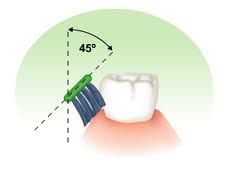Dental Health
Most of the people have these questions in their mind that which toothpaste is best for cleaning their teeth or which toothbrush is best for plaque removal.
Well, the answer to these questions is Using a good brushing technique, which can be demonstrated on a model by a dentist.
It can be mastered using any toothbrush and toothpaste.
Effective toothbrushing technique is a key to prevent most oral diseases.
Details of procedure
The aim of good toothbrushing is to remove plaque from the gingival margins, and to protect the tooth surface with a layer of fluoride. Many toothpastes are available to patients (fluoridated, tartar controlling, desensitising, whitening, etc.), and the oral health team will advise the most suitable in each case.
Similarly, many toothbrush designs are available – both manual and electric – but, as a general rule, the head should be small to allow easy manoeuvrability, and the bristles should be multitufted and made of medium nylon. Even so, some patients brush with such force that they actually saw into the necks of their teeth and produce abrasion cavities or cause gingival recession.
Technique:
• Identify those patients with regular residual plaque after toothbrushing
• Wet the patient’s own brush, apply a small amount of toothpaste and allow the patient to brush his or her teeth in the usual way and in the usual time
• Disclose the plaque to identify the areas of continued accumulation
• Develop a more thorough technique with the patient to remove all the plaque
• This may involve a change of brush from manual to electric, or vice versa, as well as a change of brushing technique by the patient
• Once an effective technique has been identified, a methodical approach should be developed so that a routine brushing technique is carried out every day
• This tends to be more effective if the more difficult areas are tackled first, such as the lingual surfaces of the lower teeth
• The patient then brushes all the teeth in a systematic manner, starting in the same place and ending in the same place each time.
• Advice can then be given on the frequency of brushing – usually twice daily as a minimum, but some patients may continue with a high sugar diet and need to brush after each meal
• Full dietary advice should also be discussed and ideally adjusted where necessary
• Toothbrushes should be replaced once the bristles start to splay, as they will not remove plaque effectively when worn down



+1.svg)
